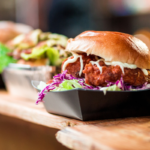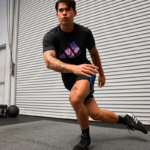
1.08am EDT01:08
Hospital system prepared for easing of restrictions under national plan, Brendan Murphy says
Back to the Covid committee, the health department secretary Brendan Murphy is being asked about the ability of the health system to cope when restrictions are eased under the national plan.
Murphy said work by ANZICS – the Australian and New Zealand Intensive Care Society – had estimated there were currently 2,000 ICU beds in use, with the potential for this to scale up by another 2,500 if necessary, with 500 of these staffed and ready to go.
“The important thing is that the jurisdictions are now doing significant additional work to refine what they will see as able to be staffed in that additional capacity,” he said.
Murphy added that the prime minister had considered “high-level aggregated data” about the ability of the health system to cope when the country reopened under the terms of the national plan. He said:
At an aggregate level we are comfortable that with the various mitigations that are proposed in phase B, with the ability to tailor the testing, tracing and quarantine and public health and social measures, at that vaccination rate, we should be able to control outbreaks and we are already seeing evidence of that in NSW.
Labor senator Katy Gallagher, whose child contracted Covid-19 and was managed under community care arrangements, said she was concerned the country was not prepared. She asked:
Do we have any understanding of how this is going to roll out across the community? Because I can say, having just been through it, I was completely unprepared for what happened at my house, and I am worried that we are going to have thousands of families in the same situation as me, completely unprepared for what’s coming their way.
Updated
at 1.14am EDT
12.57am EDT00:57
State governments have released reopening roadmaps and are on their way to vaccinating us to freedom, and while the thought of a return to the great Australian summer has provided a morale boost, the knowledge of all the days we have lost to lockdowns this year remains difficult to scrub from our minds.
Among my peers of twentysomethings, there is a sense we have been robbed of an uncomfortable enough chunk of what is meant to be the best time of our lives.
Full piece here:
12.37am EDT00:37
Government to set up $2bn loan scheme to support Australian mineral projects
The federal government says it will set up a $2bn loan facility to support Australian critical minerals projects, just days after the Quad leaders’ meeting in Washington DC where supply chains were a key issue.
The government had flagged the plans yesterday, but released a statement today outlining some details, saying it wanted to make Australia “a world-leader in the mining and downstream processing of in-demand resources, supporting jobs and communities, particularly in regional Australia”.
The government said the plans to offer up to $2bn in finance over coming years were to “ensure we are providing the rare earths and other critical minerals that are essential to the supply chains of the new energy economy”.
The loan facility will be managed by Export Finance Australia and report to the trade minister, Dan Tehan. The scheme will operate for 10 years, or until a total of $2bn in finance has been provided.
Readers will notice the climate messages in the government’s release, amid ongoing Coalition divisions over the prospect of Australia making a formal commitment to net zero emissions by 2050 in the lead up to November’s Glasgow summit.
Tehan said Australian critical minerals would “help other countries in the Indo-Pacific and beyond to accelerate their industrial reforms and transition to low-carbon technologies and that benefits Australia and our partners”.
The minister for resources and water, Keith Pitt, a Queensland National who has been developing a critical minerals strategy and has publicly signalled hesitancy to a net zero pledge, said:
The lithium industry alone, which is essential to develop new battery technology, is forecast to be worth $400bn globally by 2030 and initiatives like this will mean Australia is well placed to grab its share of the market.
The prime minister, Scott Morrison, said the idea was to fill finance gaps in critical minerals resources developments to get them off the ground.
The commercial dimensions of the critical minerals market mean it is a difficult place to get established. We want to ensure that Australia’s resources producers do get established so they can link up with others in our supply chains in a free and open Indo-Pacific. Critical minerals are a strategic area for governments too because they are fundamental to the future energy economy. These projects also mean jobs in construction, infrastructure development and ongoing roles for the mining sector.

Updated
at 12.50am EDT
12.29am EDT00:29
The New South Wales health minister Brad Hazzard insists police will be responsible for enforcing entry restrictions on unvaccinated people – a position at odds with the state’s police commissioner who said officers would “not be walking through restaurants, cafes and pubs checking if people are double vaccinated”.
The state recorded 863 new cases and seven deaths in the past 24 hours, but hit a full vaccination rate of 60.4%, edging closer to the 70% target that will trigger an easing of restrictions, likely on 11 October.
Full story here:
10.12pm EDT22:12
Matson also said Victoria had growing cases in the west and south-east. She asked Victorians in the east to “remain vigilant” after cases appeared in Knox and the Yarra Ranges.
The four deaths were a man in his 80s from Whittlesea, a woman in her 80s and a man in his 70s, both from Hume, and a woman from Whittlesea, her age unknown.
The state is expected to hit its goal of having 80% first dose vaccination of those aged 16+ by the end of Tuesday.
Victoria health minister Martin Foley also announced Victorians would take part in a home quarantine pilot program, which will include some people already isolating and involves taking a daily selfie.
This app uses a downloaded picture from a smartphone, a selfie, to check in where you are meant to be when you are meant to be there.
It links back to location-based technology to confirm both the place you are and your identity at the time of the alert.”
Updated
at 10.38pm EDT







